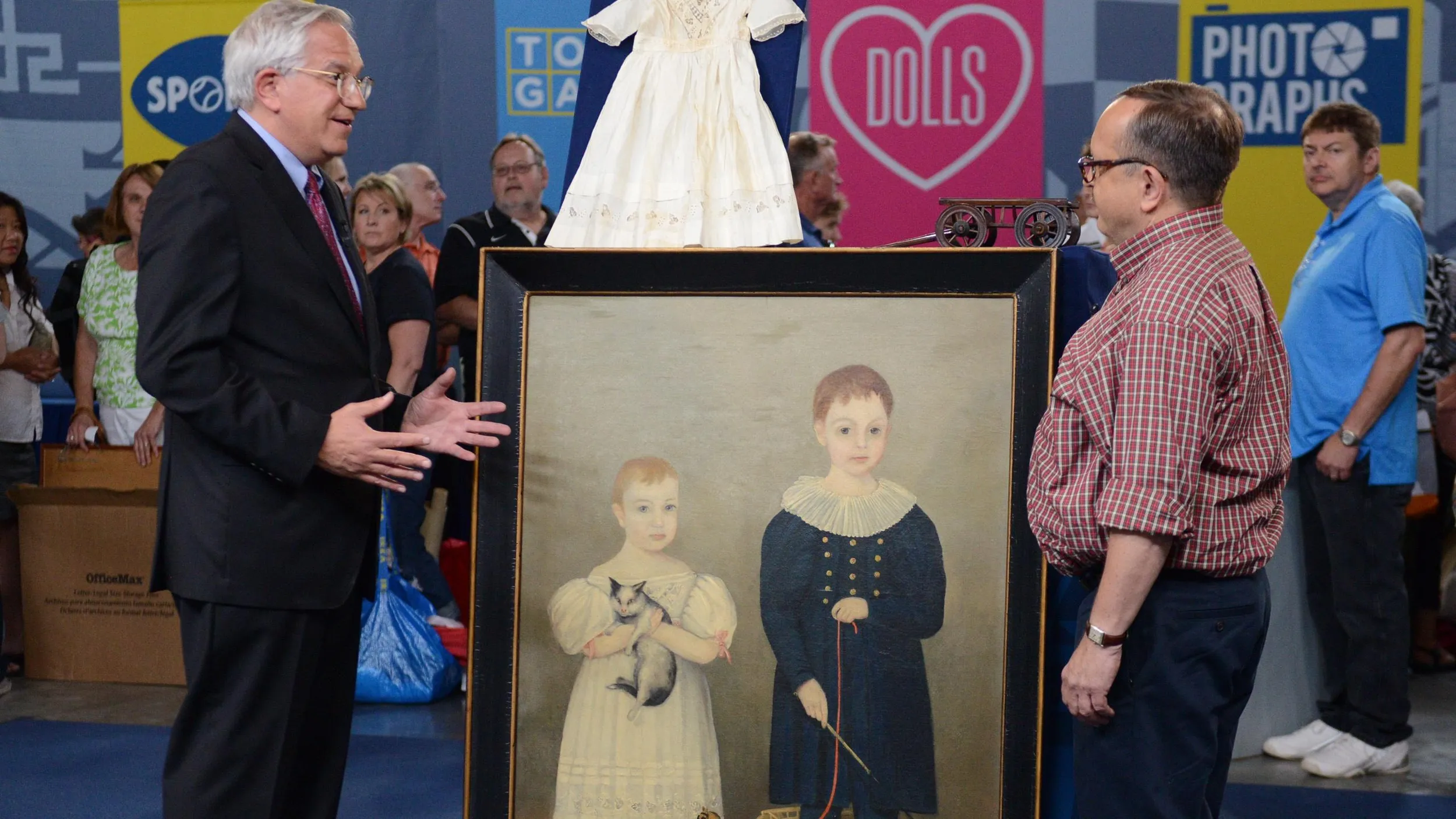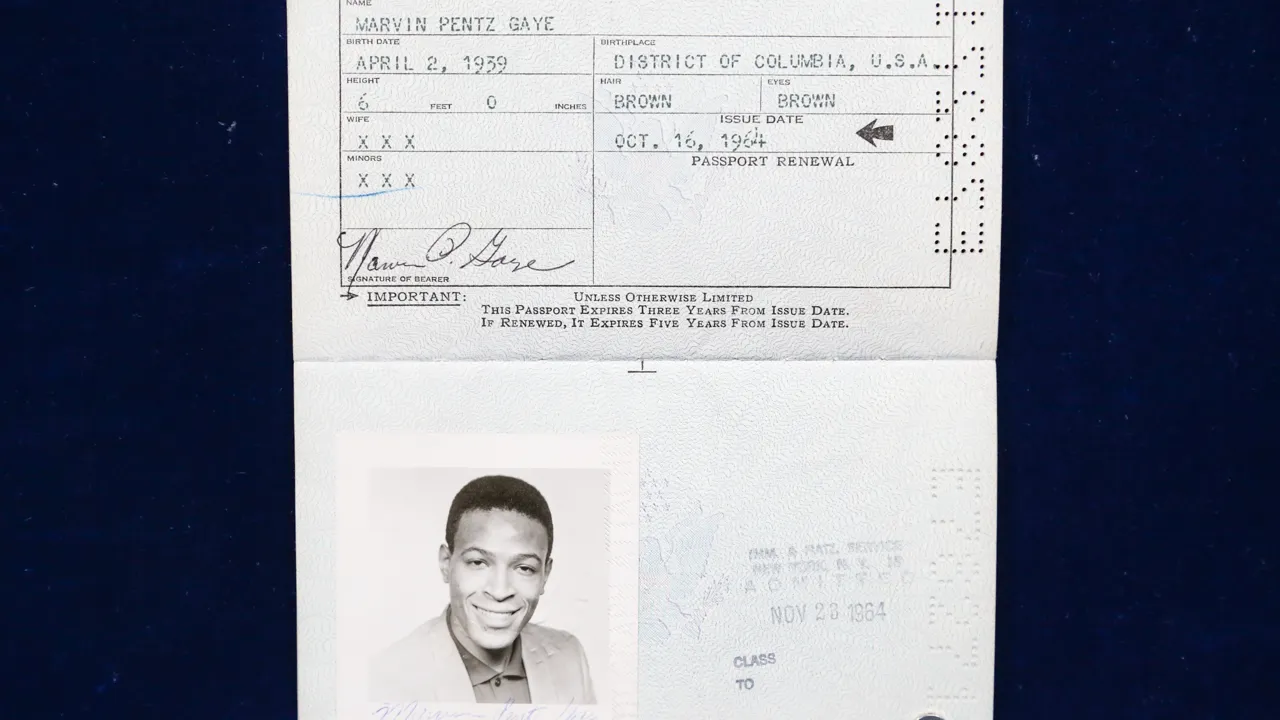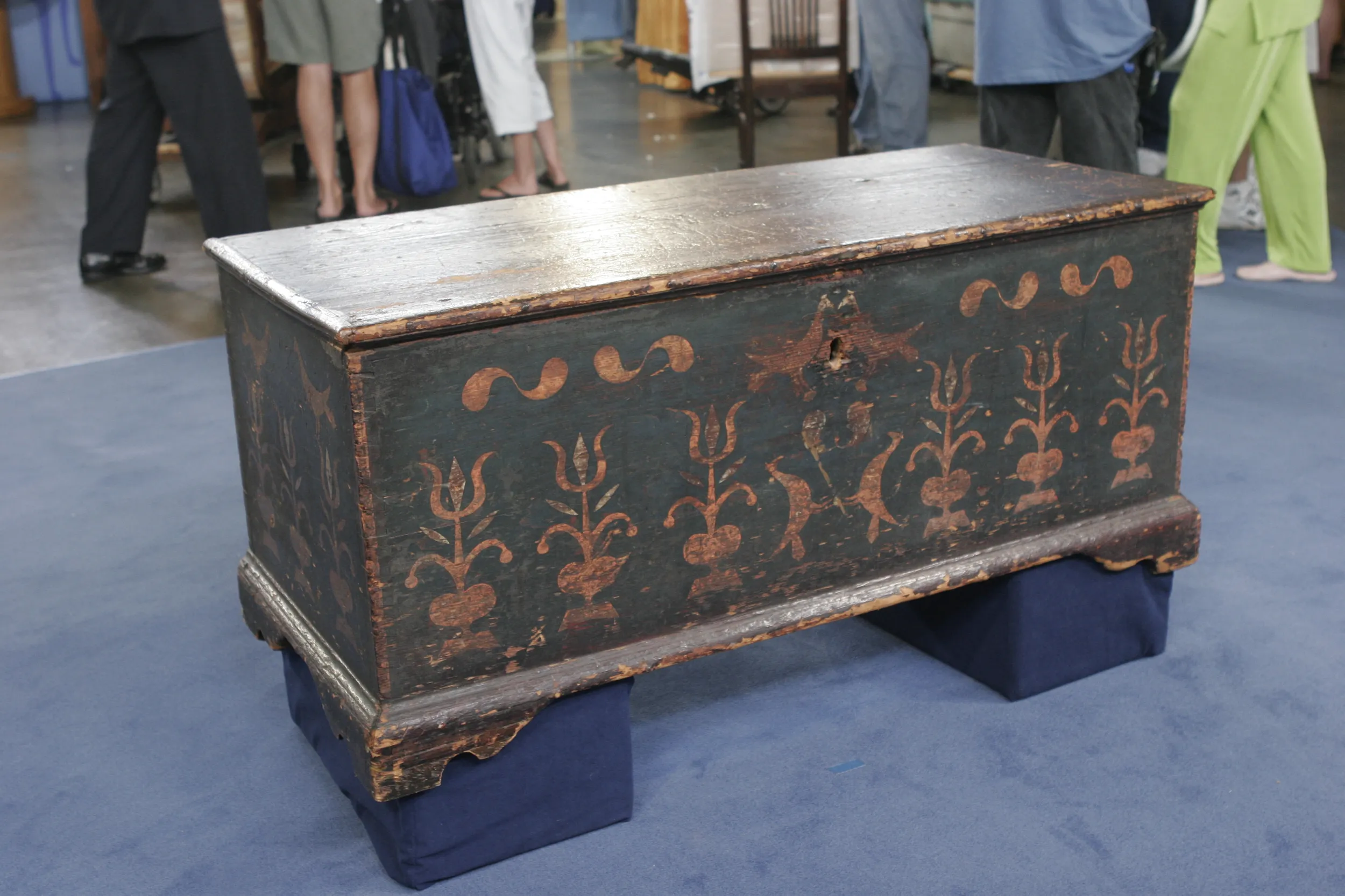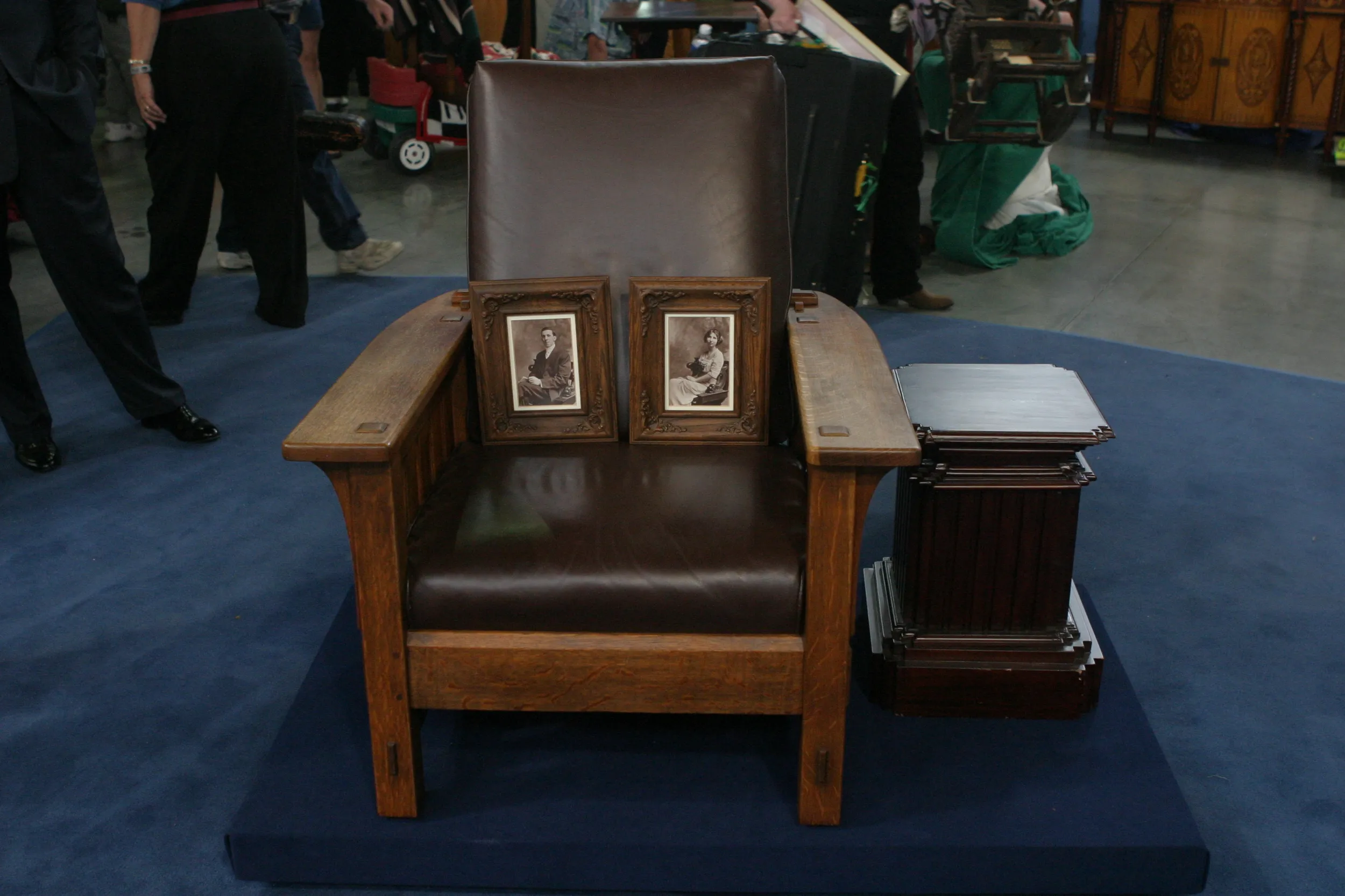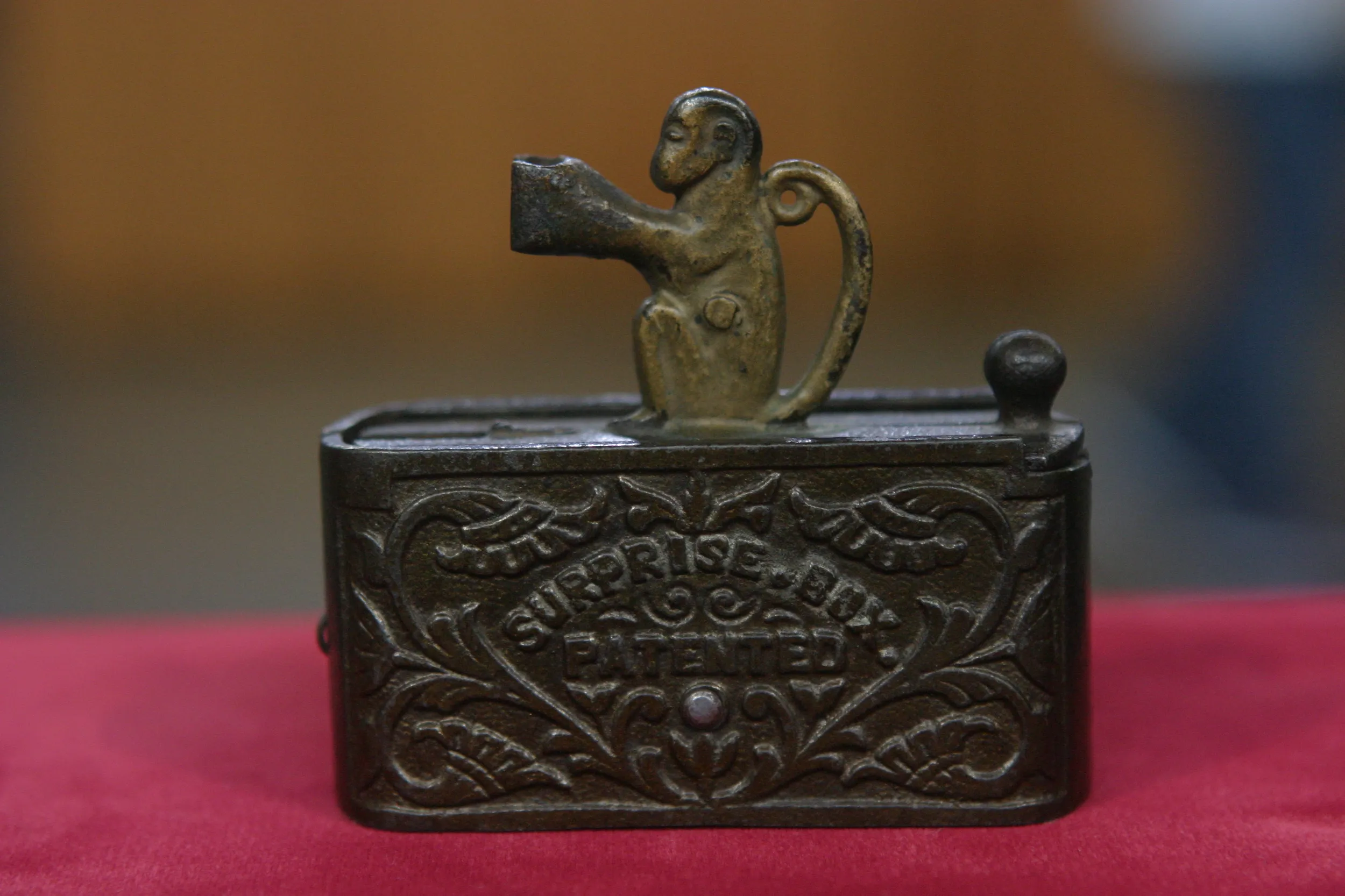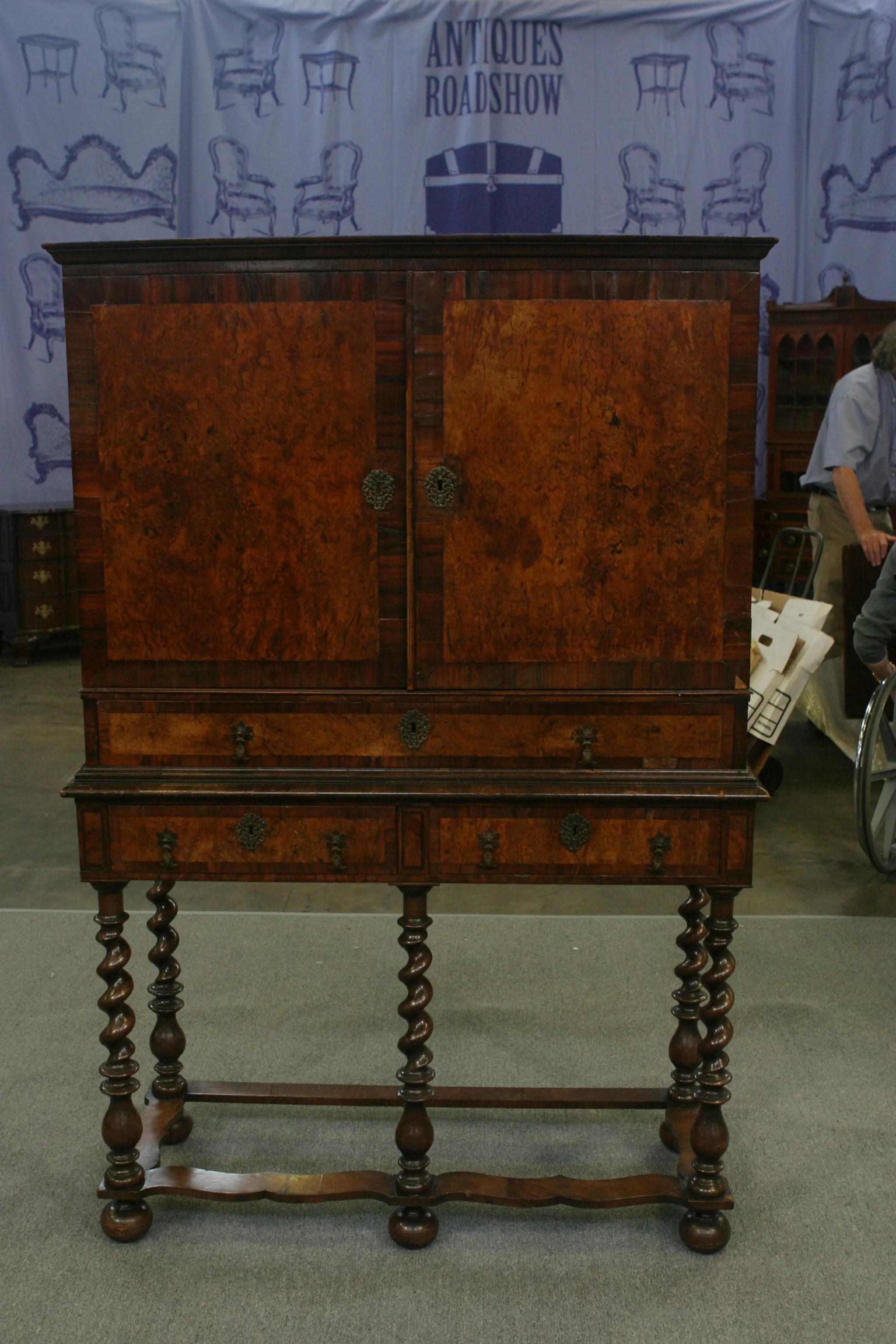GUEST: It has been in my family since probably about the '30s. My great-great-uncle was a doorman in New York City, and somebody gave it to him when they were moving out, and then it went to my great-grandmother. When she passed away, it came to my mother, and about 15 years ago, my mom gave it to me, because she knew how much I loved the piece. We've always referred to it as the music stand. We're not really sure what it is, but that's how we referred to it. And my mother used to have the record player on it when I was a kid. So I used to love listening to the records.
APPRAISER: Okay.
GUEST: And we'd prop them in the front. So as we were playing the record, the, the cover art would be on the front part, propped up.
APPRAISER: Oh, fun! We don't see things like this every day. First of all, it's interesting that it rotates. I think it's a, it's a very good question. What exactly is this?
GUEST: (chuckles)
APPRAISER: Well, stylistically, this is bridging the gap between the Art Nouveau style...
GUEST: Okay.
APPRAISER: ...and the Arts and Crafts style.
GUEST: Okay.
APPRAISER: And if you look, like, the, uh, the carving at the end here...
GUEST: These, yeah.
APPRAISER: ...it's very naturalistic and flowing, very much in keeping with the Art Nouveau that was flourishing...
GUEST: Okay.
APPRAISER: ...in the, in the 1890s.
GUEST: Oh!
APPRAISER: At the same time, it has that oak with the bright grain and the sort of austerity in shape, at least, of the Arts and Crafts period.
GUEST: Okay.
APPRAISER: So this falls right there on that line between the two. But I love the silhouette that's created by that naturalistic carving. On the side, you've got the drawers there. I do think this is a music stand...
GUEST: Oh.
APPRAISER: ...or a portfolio stand.
GUEST: Okay.
APPRAISER: The drawers are just the right size for a folded sheet of music at that period.
GUEST: Okay!
APPRAISER: And we can just rotate it around here. Look at all of this dramatic openwork carving. This was made by a very charismatic American by the name of Charles Rohlfs. Rohlfs made this probably about 1905. And he was working in Buffalo, New York, in that period. Under here...
GUEST: Okay.
APPRAISER: ...there is a little cipher, and it's meant to look like a saw...
GUEST: Okay.
APPRAISER: ...and a sickle.
GUEST: Right.
APPRAISER: And it has an R in it.
GUEST: Okay.
APPRAISER: And that is for Charles Rohlfs. He thought of his works as real originals.
GUEST: Okay.
APPRAISER: And he liked to say that they didn't refer to any other style, that they were just out of his mind. And it was his passion and love for them that brought life into them and made people love these things.
GUEST: That's cool! (chuckles)
APPRAISER: Um, it is very distinctive.
GUEST: Okay.
APPRAISER: And part of what I love about this is, Rohlfs wanted this to be a mystery. He wanted it to be something that people puzzled over...
GUEST: Okay.
APPRAISER: ...and said, "What is that?" Both in ornament and in function, it's an open question. Works of Charles Rohlfs are in museums all over the country.
GUEST: Okay.
APPRAISER: There has been a major exhibition of the works of Charles Rohlfs in recent years.
GUEST: Okay.
APPRAISER: So this piece is a treasure. Now, I want to know, what does your husband think of this?
GUEST: (laughs) My husband has been wanting to put it on the fire pit because it's in such bad shape.
APPRAISER: Your husband's gonna have a hard time living it down after this, I think.
GUEST: (laughs): Okay.
APPRAISER: I would estimate, at auction, this piece is worth between $40,000 and $60,000.
GUEST: Oh, my gosh! (laughs)

